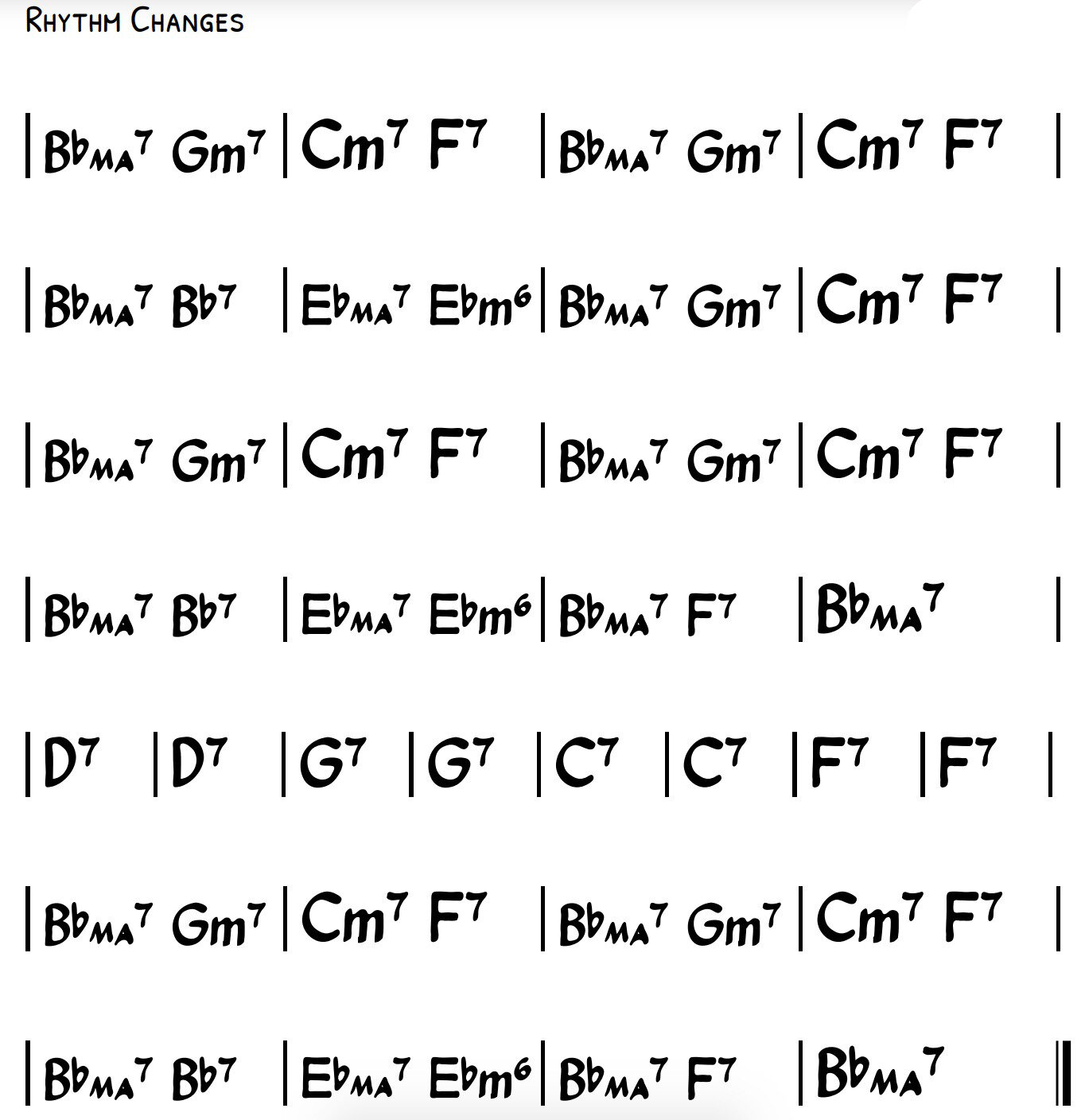Rhythm changes are a common chord progression in jazz. The basic outline of the rhythm changes chord progression dates back to George Gershwin's tune entitled, I Got Rhythm, and eventually, this progression became a staple of bebop.
There are many jazz standards that use the rhythm changes progression but some include Oleo, Anthropology, Cotton Tail, and Seven Come Eleven.
Rhythm changes are most commonly, in fact almost always, played in the key of Bb, but you should be comfortable playing the progression in all keys.
Rhythm Changes Chord progression:
Let’s dive into the rhythm changes chord progression. A few things to note:
The form is 32-bar AABA (verse, verse, chorus, verse) form.
Rhythm changes jazz standards typically only have a melody written over the A sections. There is typically not a melody written over the B section (D7, G7, C7, F7), so it is traditional to improvise over the B section.
There are several variations of the rhythm changes chord progression. Generally, these variations aren’t anything drastic and the variations are mostly in the turnarounds and passing chords.
Without further adieu, let’s look at a rhythm changes lead sheet:
How to Improvise Over Rhythm Changes
Once you are familiar and have practiced the chord progression, the next step is to practice the improvisation component. Please note I’ll show you a very simple way to navigate your way through rhythm changes and there are of course much more advanced methods not covered in this lesson. Let’s break down the A and B sections separately:
A section
Let’s look at the first four bars (bars 1-4) of the A section:
All of these chords are in Bb Major meaning you can simply play the Bb major scale! Bb is the root, Gm7 is the iv, Cm7 is the ii, and F7 is the V. Your solo will sound better if you outline the chord tones rather than just play up and down the scale but playing Bb major is a great starting point!
Let’s look at the next four bars (bars 5-8). This part is a bit more complex and will require more navigating around the chords:
Here are the scales you can play over each of these chords:
Bbmaj7 (Bb major scale)
Bb7 (Bb mixolydian - it is important to play the b7 rather than the 7 that is in the Bbmaj7 directly before)
Ebmaj7 (Eb or Bb major scale. Eb is the IV of Bb major.)
Ebm6 (An Ebm6 arpeggio will sound nice here to highlight the minor third and the 6th. )
Bbmaj7 F7 | Bbmaj7 | (You can play the Bb major scale over the last two bars.)
B Section:
The B section is usually played with a pretty open feel. The chords D7, G7, C7, F7 are all a fourth apart from each other. You can use the mixolydian mode of each chord, i.e. D mixolydian over D7, G mixolydian over G7, etc. You may also use the altered, whole tone, half whole, etc. scales in order to provide altered tones, i.e.
Wrap Up
Now you know the rhythm changes chord progression and how to improvise over the chord changes. What’s the next step? Learn a rhythm changes jazz standard! There are many great ones to choose from! Oleo and I Got Rhythm are great ones to start with. Learn the melody and practice soloing. If you find yourself having trouble following the chords, keeping the melody in your head can help keep your place in the song structure. Happy practicing!



